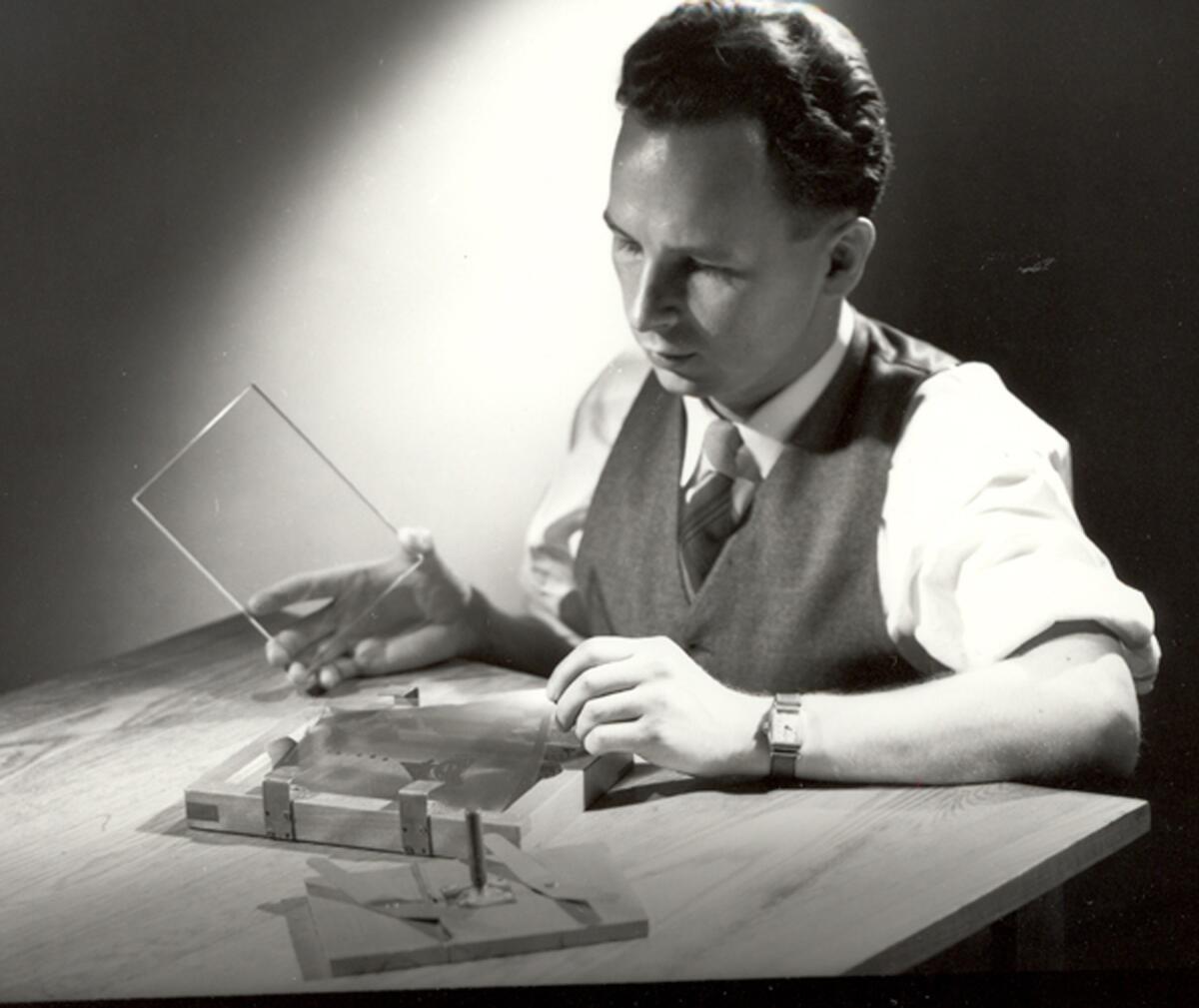S. Donald Stookey dies at 99; creator of CorningWare kitchen dishes

S. Donald Stookey, a scientist who created the durable, heat-resistant ceramic glass called CorningWare, has died. He was 99.
Stookey died Tuesday at an assisted-living center in Rochester, N.Y., said his son Donald Stookey. He said his father broke a hip in a fall a few months ago and underwent surgery, but his health deteriorated.
Stanley Donald Stookey’s type of glass was so strong that the military used it in guided missile nose cones. His space-age material, developed in the early 1950s, found a home in most American kitchens in the form of white dishes decorated with small blue flowers.
“He was one of the great glass scientists in the history of the world,” said Steve Feller, a physics professor at Coe College in Cedar Rapids, Iowa, where Stookey earned an undergraduate degree in chemistry and mathematics and remained active in alumni activities. “There were all sorts of spinoff applications from his fantastic work.”
CorningWare was celebrated for its versatility. It was strong enough to withstand minor kitchen mishaps, and it gave home cooks the ability to bake and serve food in the same dish. The dishes could go directly from the oven to the dinner table and then into the refrigerator or freezer.
You could also put them in a microwave, and some types could be heated atop a stove.
Stookey joined Corning Glass Works in New York in 1940, the same year he graduated with a doctorate in physical chemistry from the Massachusetts Institute of Technology. He immersed himself in research, studying the complex chemistry of oxidation and its effects on glass, according to a company biography.
In 1952, he placed a plate of glass into an oven to heat it, but the oven malfunctioned. Instead of heating to about 1,100 degrees Fahrenheit, the oven shot up to more than 1,600 degrees. Stookey expected to find a molten mess. Instead, he found an opaque, milky-white plate. As he was removing it from the oven, his tongs slipped, and the plate fell to the floor. But instead of shattering, it bounced.
He had discovered glass ceramics, which Corning patented as Pyroceram. By the end of the 1950s, the work led to CorningWare, one of the company’s most successful product lines.
“He was fearless — the unknown never daunted him,” said David Morse, Corning’s chief technology officer. “He was an unassuming and quiet but tough person,” whose numerous inventions generated big businesses for the company. “Don was recognized throughout the glass technology community as a world-class scientist.”
In a 2011 interview, Stookey said he initially viewed glass research as a way to make money, but he became intrigued by glass’ special characteristics.
“I thought this might be a field where I could find something new, invent things not seen before, and I was lucky to have that be the case,” he said in a video project funded by the History Channel for the Corning Museum of Glass.
Stookey’s other innovations included developing photosensitive glass that helped lead to color television picture tubes.
He received the National Medal of Technology from President Reagan in 1987. In 2010, at age 94, he was inducted into the National Inventors Hall of Fame.
Stookey was born in Hay Springs, Neb., on May 23, 1915. His family moved from Nebraska to Cedar Rapids when he was 6. He graduated from Coe College in 1936 before earning a master’s degree in chemistry from Lafayette College in Easton, Pa., followed by the MIT doctorate.
Pitt writes for the Associated Press.
More to Read
Start your day right
Sign up for Essential California for the L.A. Times biggest news, features and recommendations in your inbox six days a week.
You may occasionally receive promotional content from the Los Angeles Times.






